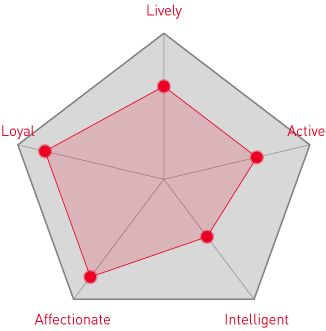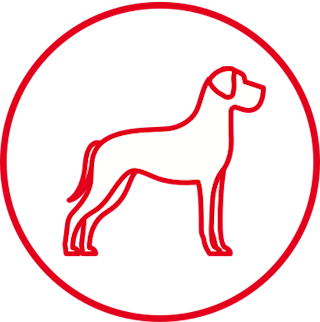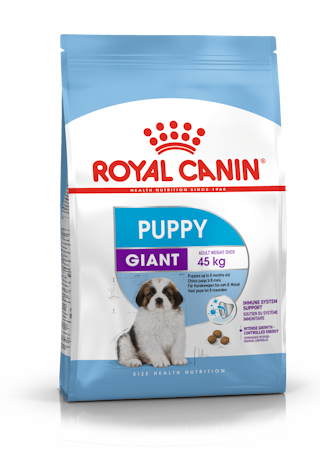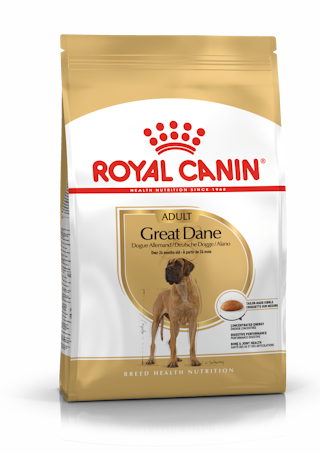
Let's talk Great Danes
Great Danes may not be Danish, but they certainly are great. Tipping the scales in the largest cases at not far off 80kg, these whopping canines are sometimes known as the Apollo of Dogs after the ancient sun god. Great Danes may be Olympian in size, but, space-permitting, and if they are well-trained, they can make lovely family dogs: they will take up just as much room in your heart as in your home.Official name: Great Dane
Origins: Germany

| Drooling tendencies |
|
Warm weather? |  |
| Shedding level |  |
Suited to apartment living? |  |
| Energy Level (high, low, medium)* | Medium | Family Pet?* |
 |
| Compatibility with other pets |  |
Can stay alone?* |  |
* We advise against leaving pets alone for long stretches. Companionship can prevent emotional distress and destructive behaviour. Speak to your veterinarian for recommendations.
Every pet is different, even within a breed; this snapshot of this breed specifics should be taken as an indication.
For a happy healthy and well-behaved pet, we recommend educating and socializing your pet as well as covering their basic welfare needs (and their social and behavioral needs.
Pets should never be left unsupervised with a child.
Contact your breeder or veterinarian for further advice.
All domestic pets are sociable and prefer company. However, they can be taught to cope with solitude from an early age. Seek the advice of your veterinarian or trainer to help you do this.


| Baby age | Birth to 2 months |
| Puppy age | 2 to 8 months |
| Adult age | 8 months to 2 years |
| Mature age | 2 to 5 years |
| Senior age | From 10 years |

1/7
Get to know the Great Dane
All you need to know about the breed
Great Danes are quite simply huge: a sweet, friendly and affectionate character wrapped in outsize packaging.
They have maintained the stature and strength needed for their original mission, hunting wild boar, but over the centuries the aggressiveness has been bred out of them, giving way to gentleness. Great Danes are handsome hounds, with a majestic demeanour, alert expression and dense glossy coat in one of three evocative colour combinations: fawn and brindle, black and harlequin or blue.
Once trained – and this should be relatively straightforward – Great Danes get on well with children and can make lovely family pets, with the caveat that they do require a level of commitment that’s a notch above a smaller dog. If you’re pushed for space or a collector of valuable china ornaments – one swipe of that solid Great Dane tail at tabletop height can have devastating consequences – you might want to reconsider.
Great Danes require a decent amount of exercise, although despite their size they are not the most energetic breed around. Once fully grown they enjoy a variety of exercise – walks, runs and the chance to potter around in an enclosed space (luckily they can’t jump so you won’t need to supersize your fence). One thing to bear in mind is that because of their enormous size, Great Danes’ average lifespan is short.
On a day-to-day basis, the only real downside to having a Great Dane as a pet is the slobber. Great Danes drool a considerable amount. But these affable, larger-than-life characters more than make up for that in the pleasure they bring their human companions.

2/7
2 facts about Great Danes
1. Scooby Dooby Doo, Where Are You?
The lovable but cowardly cartoon canine Scooby Doo is thought to be loosely based on a Great Dane! The breed has had another brush with stardom in the form of Marmaduke, the super-size star of a comic strip, beginning life in the 1950s, as well as a 2010 film.
2. Great (Not) Dane
The Great Dane is, with impeccable logic, not actually Danish at all: the breed’s origins lie in Germany, where in 1878, a committee of judges and breeders met in Berlin to classify several similar dogs known by different names under just one: Deutsche Dogge. That literally translates into English as German Dog. So the breed became known in English as the Great Dane. Makes sense.
History of the breed
For a breed with such a long history, it’s not surprising that the Great Dane’s origins are not always clear. Images from Egyptian tombs suggest they may have existed for thousands of years. Mastiff- and greyhound-like breeds as well as the extinct German hunting dog the Bullenbeisser are thought to feature in Great Danes’ ancestry.
What is certain is that the precursors to modern Great Danes were prized as wild boar hunters as well as guard dogs in Medieval Germany. When the breed first came to the United Kingdom the dogs were known as German boarhounds.
In the 19th century several similar varieties were classified together under the new name Deutsche Dogge. How that became Great Dane in English is not clear but to complicate matters further it may have been via the translation of a French name given to the breed: Le Grand Danois.

4/7
From head to tail
Physical characteristics of Great Danes
1. Head
Statuesque appearance with large, well-defined head.
2. Face
Alert expression with naturally forward-folding ears.
3. Body
Strong, muscular, square-shaped body.
4. Coat
Short dense, glossy coat in three possible colours.
5. Tail
Strong tail tapering to the tip.

5/7
Things to look out for
From specific breed traits to a general health overview, here are some interesting facts about your Great Dane
Beware of bloat
Gastric dilatation and volvulus (GDV), more commonly known as bloat, affects many large breeds but is the number-one problem associated with Great Danes. Owners need to know the signs to look out for – bloated abdomen, restlessness, retching, salivation and whining or abnormal stillness – and what to do: seek immediate help from a veterinarian. Some owners opt for preventive surgery which can protect their dogs, partially at least. The procedure, called gastropexy, involves stitching the walls of the stomach in place and should prevent the life-threatening torsion (volvulus) of the stomach, although not the dilatation (bloating). It’s a good start.

6/7
Caring for your Great Dane
Grooming, training and exercise tips
Making sure your Great Dane remains in good health and enjoys life requires a certain amount of effort in grooming, exercise and training. The Great Dane’s short, smooth coat isn’t too high maintenance, except during its shedding season once or twice a year, when the usual weekly brushing will need to be stepped up to a daily tackling of the fluff. Great Danes need regular exercise – multiple daily walks are ideal. Once their joints are fully grown, at around two years, they can also enjoy jogs or hikes. Off-the-lead exercise sessions need to be in a secure, enclosed space: Great Danes like following their noses. With this much dog on your hands, you’ll need to make sure your Great Dane is well trained and socialised early. Firm, consistent training methods will bring rewards in the form of an affectionate, sociable and eager-to-please mega-dog.
7/7
All about Great Danes
Yes, they do. Properly trained Great Danes can be great fun: sociable, eager to please and good with children – under supervision of course. Their sheer size means they are not for the faint-hearted: you’ll need plenty of space at home for a start and because they’re so huge, albeit gentle, they may not be the most practical choice for families with very small children.
Great Danes are not known to be aggressive, although their large size may understandably make some people nervous: all the more reason to make sure they are well trained. Great Danes are not particularly known for their barking either – but with great vocal chords to match great everything else, when they do decide to express an opinion you’ll certainly know about it.
Read more on this topic


How to adopt a dog

Things to consider before getting a dog
Sources
1 - Veterinary Centers of America https://vcahospitals.com/
2 - Royal Canin Dog Encyclopaedia. Ed 2010 and 2020
3 - Banfield Pet Hospital https://www.banfield.com/
4 - Royal Canin BHN Product Book
5 - American Kennel Club https://www.akc.org/




